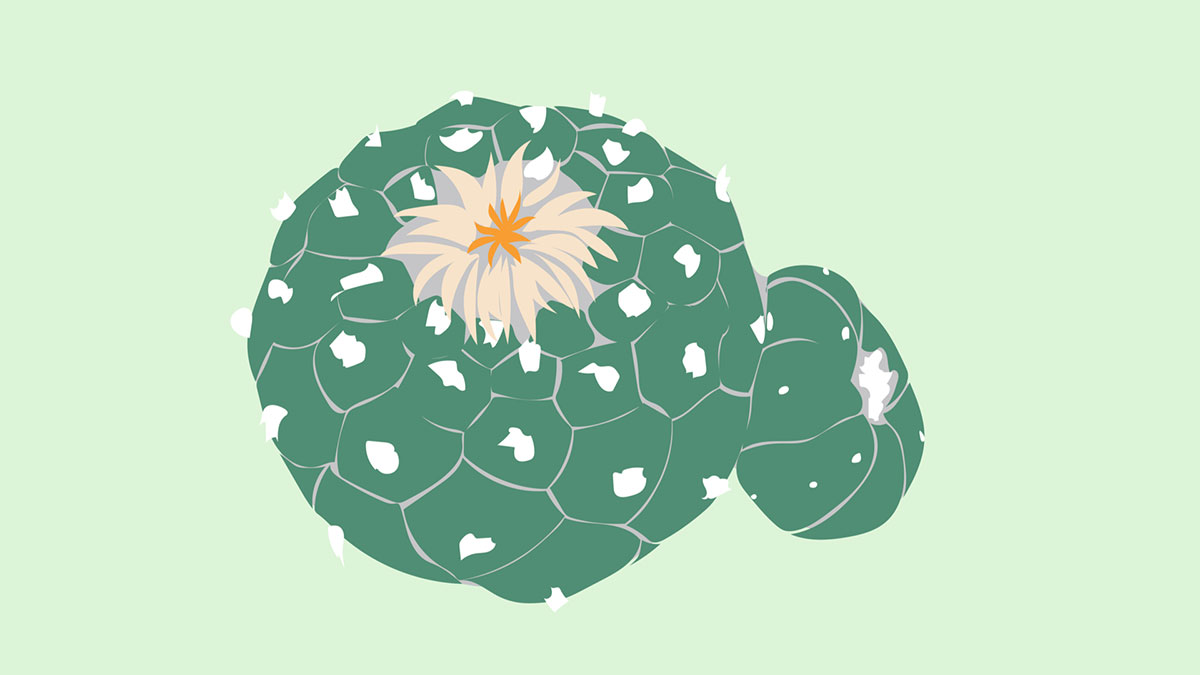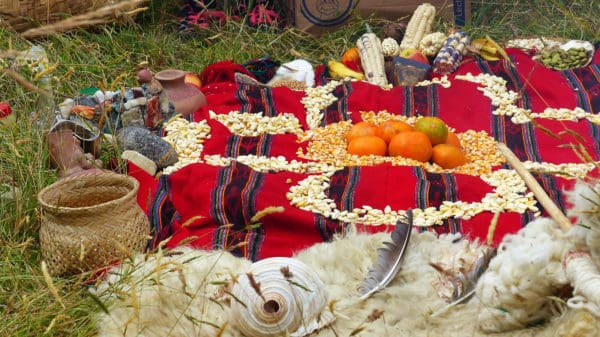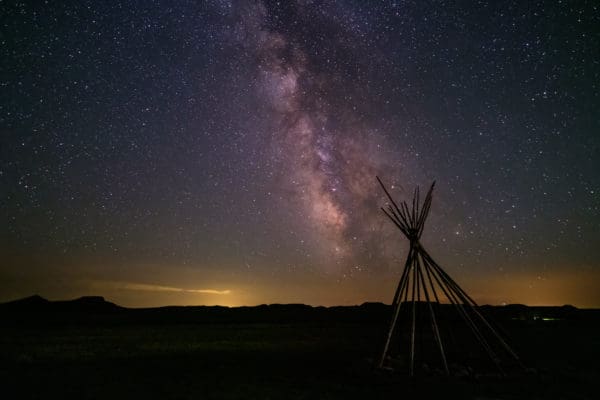Lophophora williamsii (peyote) is a small species of cactus native to Mexico and the southwestern United States. It is small, round, and spineless, with a flower that develops at the top and produces fruit. Peyote contains mescaline, a psychoactive compound that produces visionary effects.
Peyote has been used in religious ceremonies and as a sacramental medicine for thousands of years, but as word spread of the mystical experiences provoked by its psychedelic properties among Western cultures in the early 1960s, non-religious experimentation made peyote a highly sought-after commodity.
Amidst the economical development of its native environment and overharvesting due to rising demand, peyote has become an endangered species at risk of extinction if these factors continue contributing to its decline.
Keep reading for a more in-depth understanding of peyote’s deep cultural significance, its current state of endangerment, what can be done to protect the species, and why ensuring its survival is so important for future generations.
What is Peyote?
Peyote has been used as medicine and for ceremonies by indigenous people in northern Mexico and the southwestern United States for at least 5,700 years. For example, peyote has been the foundation of the Wixárika religious practices within Huichol culture in Mexico and is revered as one of four key deities. It is a sacrament integral to the Wixárika cosmovision, believed to facilitate access to other deities by way of the visionary, psychospiritual journey it evokes.
Animism is a major underlying theme of the Wixárika religion, which entails belief in the connectedness of all things, and is encapsulated by the view that everything has a spirit that participates in the meaningfulness of existence for all. To consume peyote and have mystical, transcendental spiritual experiences is to receive a gift from another living entity with an equally significant role in the ecosystem and energy that is the universe as a whole.
Beyond the spiritual uses of peyote, Indigenous people of Mexico and North America have also used peyote to heal and treat a variety of conditions, such as birthing pains, diabetes, and even snakebite. Modern-day studies have demonstrated compelling evidence in support of medicinal peyote use; in one survey, 68-86% of respondents reported significant improvement of symptoms related to conditions like substance use disorders, depression, and post-traumatic stress disorder (PTSD).
Because of its mind-altering effects, peyote was vilified by the Spanish during their colonization and imposition of catholic traditions in South America. Peyote and other psychedelic substances were categorized as Schedule I during the War on Drugs, making them more heavily restricted than some of the most highly addictive and dangerous substances known (such as opiates and cocaine). However, since the amendment of the American Indian Religious Freedom Act (AIRFA) in 1994, the U.S. Department of Justice allows religious exemption for ritual use of peyote by active members of the Native American Church (NAC).
Why is Peyote Threatened?
Awareness of the transformational and spiritual psychedelic experiences facilitated by peyote became more widespread in the 1970s after books published by spiritual and occult authors like Carlos Castaneda and Aldous Huxley fueled interest in the ceremonial practices surrounding it.
So began a growing trend of entheogenic tourism. The novelty of peyote’s effects continues to draw curious travelers from all over the world as the popularity of and fascination with psychedelic experience becomes increasingly prominent.
To meet the demands for export and tourists who seek it, peyote has been subjected to overharvesting. The lack of responsible, sustainable harvesting practices has posed a danger to the survival of the species, which threatens the cultural, spiritual, and medicinal traditions of the indigenous people for whom peyote is an integral part of life.
Peyote grows very slowly, which complicates the possibility of the species’ survival amidst unsustainable harvesting practices. Like many types of cactus, it has the ability to regenerate. In order to do so, however, peyote must be harvested correctly with this in mind. Unfortunately, most poachers (who are not knowledgeable peyoteros allowed to legally harvest peyote) lack either education or respect for the techniques required to sustain the species long-term.
Regeneration can occur when the round top of the peyote cactus that is visible above the ground ( the crown) is harvested by cutting above the roots so the base of the cactus can survive. The cut surface can then form a callous and regenerate from the preserved roots and base. However, even when harvested respectfully peyote can require 6 to 8 years to regenerate.
Though peyote is protected and requires different licensing and permissions to harvest depending upon the location, illegal harvesting further threatens the dwindling population. Additionally, the natural habitat for the cactus has undergone economic development and modernization, which has negatively impacted the population of this species due to land use and agriculture. The declining population of peyote makes the cactus’ sexual reproduction and proliferating the genetic diversity vital to survival nearly impossible.
Peyote Conservation Efforts
On the whole, populations of plants used for medicinal purposes (many of them also having important cultural significance) are declining due to unsustainable harvesting practices, threats to the landscape of their natural environment, and climate change. Currently, there are 3 primary threats to the peyote cactus:
- Habitat loss resulting from livestock grazing and other agricultural activities
- Overharvesting
- Poaching
Conservation efforts are underway, but far more support is needed. Reciprocity will be crucial to the survival of the peyote cactus. If indigenous groups like the NAC who use peyote legally are empowered and supported in efforts to sustainably maintain and regenerate populations of peyote, it may be possible to reverse the trend toward extinction.
Reciprocity requires that everyone who has had any experience with peyote recognize that while it may have meant something unique to them personally, it has immense spiritual importance to the indigenous cultures who have shared their sacred medicine. It becomes an ethical responsibility to give back and offer support to these communities and safeguard their cultural integrity. This may mean financial support for conservation efforts, volunteering time or skills for the cause, and helping to educate others who participate or are interested in peyote medicine.
There are organizations working hard to rehabilitate populations of peyote in various ways. The Cactus Conservation Institute, for example, has purchased hundreds of acres of land to serve as a sanctuary for endangered species of cactus, including peyote. Additionally, the organization works with landowners with property located within the native environment for the cactus who support conservation efforts and act as stewards for the CCI’s ecological initiatives.
Unfortunately, it was not until 1994 when congress passed the American Indian Religious Freedom Act Amendments that offered a long-overdue exception to the illegal status of peyote in the United States, allowing for its possession, transport, and use in traditional religious ceremonies by federally-recognized tribes. The restrictive laws surrounding peyote may very well have contributed to the population decline that’s been documented for decades, however, the shifting cultural and political mentality is crucial to the success of indigenous efforts to cultivate and sustain their supply.
Organizations including the Native American Rights Fund (NARF), The Indigenous Peyote Conservation Initiative, and The National Council of Native American Churches continually work to support conservation efforts within their communities and preserve age-old traditions.
Closing Thoughts
While foreigners without cultural ties to peyote may very well seek it without obvious malintent, participation in psychedelic tourism can be harmful nonetheless. Without awareness and an ethical approach to obtainment and use of this sacred indigenous medicine, we may ultimately become responsible for the extinction of this plant.
Those who pursue it for personal benefit, adventure, and novelty must come to understand how vital peyote is to the identity, spirituality, and legacy of the indigenous cultures who have shared their traditions with the outside world. Pedro Medellin, a researcher who focuses on the peyote population in sacred areas of land that are home to the indigenous Huichol peoples of Mexico, has stated that “If peyote disappears, then their whole culture disappears.”
Even for people who have no interest in psychedelic medicine or natural preservation, surely the grim prospect of stripping an entire culture of their history and traditions resonates and evokes compassion for this issue. Peyote is not just a plant to so many members of the indigenous community who have shared its habitat for thousands of years: it is a way of life.
For more information about peyote sustainability practices, read Why Peyote Sustainability Matters.








